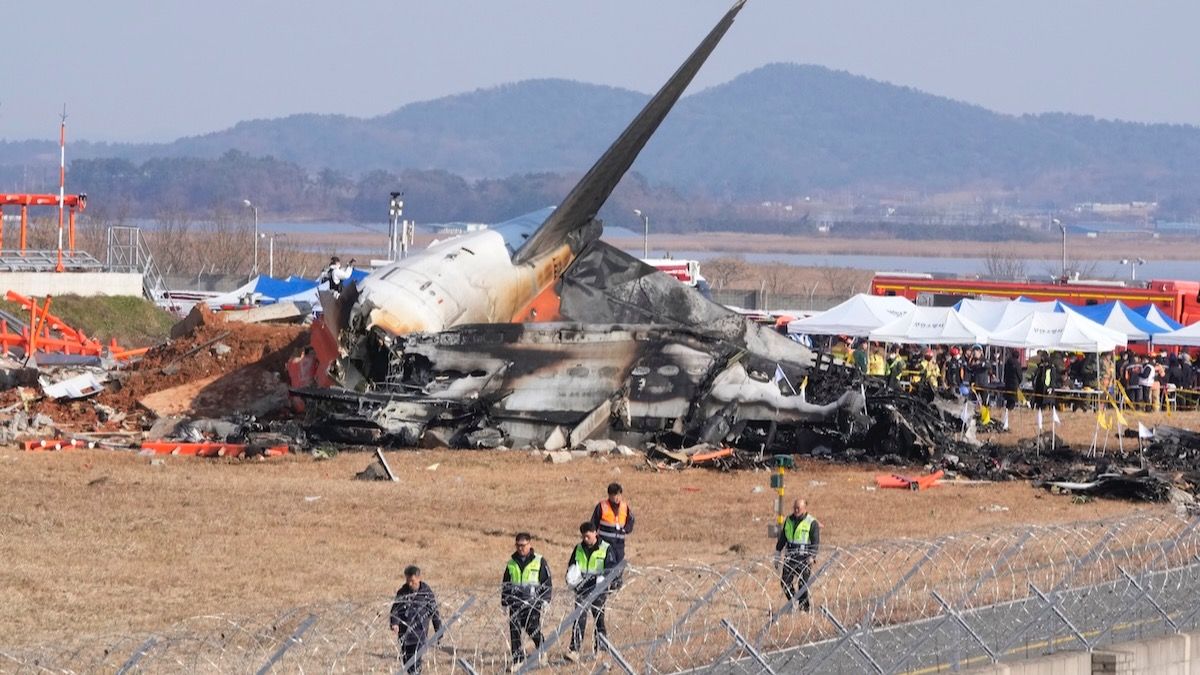Jeju Air, South Korea’s popular low-cost carrier, offers a compelling blend of affordability and convenience. This guide dives into the airline’s extensive flight network, diverse fleet, customer experiences, and commitment to sustainability. We’ll explore everything from their domestic and international routes to their in-flight services and marketing strategies, providing a comprehensive overview for both seasoned travelers and those new to Jeju Air.
From understanding their route map and comparing it to competitors like Korean Air and Asiana Airlines, to delving into their fleet details and passenger reviews, we aim to give you a clear picture of what makes Jeju Air tick. We’ll also touch upon their marketing techniques and sustainability initiatives, offering a holistic perspective on this significant player in the Asian aviation market.
Jeju Air’s Extensive Flight Network
Jeju Air, a prominent South Korean low-cost carrier (LCC), boasts a comprehensive flight network spanning both domestic and international destinations. This network is a key factor in its success, providing convenient and affordable travel options for a wide range of passengers. The following sections delve into the details of Jeju Air’s flight routes, fleet, and services, comparing them to competitors to provide a comprehensive overview.
Jeju Air is a popular South Korean airline, known for its domestic flights and growing international routes. It’s important to remember that air safety is paramount, so staying informed about potential risks is key; check out this link for updates on south korea plane crash news to stay in the loop. Understanding these news items helps passengers make informed decisions about air travel, even when considering a flight with Jeju Air or other airlines.
Jeju Air’s Domestic Flight Routes
Jeju Air operates a significant number of domestic flights within South Korea, connecting major cities and islands. These routes are characterized by high frequency, catering to both business and leisure travelers. The table below provides a sample of these routes, showcasing the variety of aircraft used and typical flight durations.
| Route | Frequency (Daily) | Aircraft Type | Average Flight Duration |
|---|---|---|---|
| Seoul (Gimpo) – Jeju | 10+ | Boeing 737-800 | 1 hour |
| Seoul (Incheon) – Busan | 5+ | Airbus A321neo | 1 hour 15 minutes |
| Busan – Jeju | 3+ | Boeing 737-800 | 1 hour |
| Daegu – Jeju | 2+ | Boeing 737-800 | 1 hour |
Note: Frequencies are approximate and can vary depending on the season and demand.
Jeju Air’s International Flight Destinations
Jeju Air’s international network extends across several regions in Asia, primarily focusing on popular tourist destinations. The frequency of flights to each destination varies, reflecting seasonal demand and market conditions.
- Southeast Asia: Bangkok (Thailand), Da Nang (Vietnam), Cebu (Philippines), Flights to these destinations generally operate multiple times per week, often increasing during peak tourist seasons.
- Northeast Asia: Sapporo (Japan), Osaka (Japan), Taipei (Taiwan), Frequency varies, with some routes offering daily flights and others operating several times a week.
- Other Regions: Jeju Air also offers flights to other regions as demand dictates, expanding their network to cater to the evolving travel market.
Comparison of Jeju Air’s Flight Network with Competitors
Compared to major full-service carriers like Korean Air and Asiana Airlines, Jeju Air’s network is more focused on high-frequency routes to popular destinations, reflecting its LCC business model. While Korean Air and Asiana Airlines offer a wider range of destinations globally, Jeju Air excels in frequency to key destinations within Asia.
| Airline | Number of Destinations (Approximate) | Average Flight Frequency (per day, approximate) |
|---|---|---|
| Jeju Air | 50+ | High frequency to key destinations |
| Korean Air | 100+ | Varies greatly by route |
| Asiana Airlines | 80+ | Varies greatly by route |
Jeju Air’s Fleet and Services
Jeju Air’s fleet consists primarily of modern, fuel-efficient aircraft designed for efficient and comfortable short-to-medium haul flights. The airline also offers a range of in-flight services, although these are generally more limited than those offered by full-service carriers, reflecting its low-cost model. This section details Jeju Air’s aircraft and services, providing a comparison with a competitor to highlight key differences.
Jeju Air is a popular South Korean airline, known for its domestic flights and affordable fares. However, when considering air travel safety, it’s important to be aware of the overall history of south korean plane crashes , which helps put any airline’s safety record into perspective. Understanding this broader context helps you make informed decisions when booking with Jeju Air or any other carrier.
Jeju Air’s Aircraft Types
Jeju Air’s fleet is comprised of several types of aircraft, each chosen for its efficiency and passenger capacity. These aircraft offer a comfortable and modern flying experience for passengers.
- Boeing 737-800: A popular narrow-body aircraft with a capacity of approximately 180 passengers. Features include comfortable seating and overhead storage compartments.
- Airbus A321neo: A larger narrow-body aircraft with a capacity of around 230 passengers. Offers similar features to the Boeing 737-800, with potentially more legroom in some configurations.
Jeju Air’s In-Flight Services
While Jeju Air prioritizes affordability, they still offer a selection of in-flight services to enhance passenger comfort and convenience. These services typically come at an additional cost.
| Service Type | Description | Cost | Availability |
|---|---|---|---|
| Meals | Variety of snacks and light meals available for purchase. | Varies | On most flights |
| Beverages | Water, soft drinks, juices, and alcoholic beverages available for purchase. | Varies | On most flights |
| In-flight Entertainment | Limited options, often relying on personal devices. | N/A | On some flights |
| Baggage Allowance | Specific allowances vary depending on fare type; additional baggage fees may apply. | Varies | Standard baggage allowance included in fare |
Comparison of Passenger Experience with a Low-Cost Competitor

Comparing Jeju Air’s passenger experience with another LCC like AirAsia, for example, reveals some similarities and differences. While both airlines focus on affordability, the specific services offered and overall experience might differ.
- Similar: Both airlines typically offer basic in-flight services with additional charges for meals and baggage.
- Different: Jeju Air might offer slightly more legroom or more frequent flights on certain routes compared to AirAsia, depending on the specific aircraft used and route popularity.
Jeju Air’s Marketing and Branding
Jeju Air’s branding and marketing strategies play a crucial role in attracting customers and maintaining its competitive edge in the LCC market. The airline’s brand identity, marketing campaigns, and overall approach are designed to appeal to its target audience and communicate its value proposition effectively. This section examines Jeju Air’s marketing efforts and compares them to those of a competitor.
Jeju Air’s Branding Strategy

Jeju Air’s branding is characterized by a youthful and energetic image. The logo often features bright, vibrant colors and a playful design, reflecting the airline’s focus on affordable and accessible travel. The overall messaging emphasizes convenience, affordability, and a positive travel experience.
Jeju Air’s Marketing Campaigns
Jeju Air employs a variety of marketing campaigns to reach its target audience. These campaigns often leverage online channels, social media, and partnerships to promote special offers and enhance brand visibility.
- Seasonal Promotions: Jeju Air frequently runs promotions tied to holidays and travel seasons, offering discounted fares to stimulate demand.
- Social Media Engagement: Active engagement on social media platforms allows Jeju Air to connect with potential customers directly and build brand loyalty.
- Partnerships: Collaborations with travel agencies and other businesses expand the airline’s reach and provide access to new customer segments.
Comparison of Jeju Air’s Marketing Approach with a Competitor
Comparing Jeju Air’s marketing to that of another LCC like Scoot, for instance, highlights both similarities and differences in their strategies. Both airlines utilize online channels and promotions, but their specific approaches and brand messaging may differ based on their target market and brand positioning.
| Jeju Air | Scoot |
|---|---|
| Focuses on youthful, energetic branding | Emphasizes affordability and value for money |
| Utilizes social media actively for engagement | Leverages online channels and email marketing extensively |
| Runs frequent seasonal promotions | Offers a loyalty program to reward frequent flyers |
Jeju Air’s Customer Reviews and Reputation
Understanding customer perception is vital for any airline. This section summarizes online customer reviews of Jeju Air, analyzes its overall reputation, and details its customer service processes. Analyzing both positive and negative feedback helps to assess the airline’s strengths and areas for improvement.
Summary of Online Customer Reviews
Online reviews of Jeju Air are mixed, reflecting the typical experiences with low-cost carriers. While many praise the affordability and frequency of flights, some criticize aspects of the service and customer support.
| Aspect of Service | Summary of Reviews |
|---|---|
| On-time performance | Generally positive, with occasional delays due to weather or operational issues. |
| Customer service | Mixed reviews; some praise helpful staff, while others report difficulties in contacting customer service. |
| In-flight experience | Generally acceptable, given the low-cost nature of the airline; some mention limited legroom. |
Overall Reputation and Customer Satisfaction
Jeju Air maintains a generally positive reputation, based on a mix of positive and negative reviews. While customer satisfaction scores might vary depending on the platform and survey methodology, the airline generally receives acceptable ratings compared to other LCCs.
Jeju Air’s Customer Service Processes
Jeju Air offers various channels for addressing customer complaints and feedback. Their customer service process typically involves the following steps:
- Contacting customer service through phone, email, or online chat.
- Providing details of the complaint or feedback.
- Receiving an acknowledgement of the complaint and an estimated response time.
- Receiving a resolution or response to the complaint, depending on the nature of the issue.
Jeju Air’s Sustainability Initiatives
Increasingly, airlines are incorporating sustainability into their operations. This section details Jeju Air’s efforts in this area, highlighting their contribution to corporate social responsibility and comparing them to a competitor’s practices.
Jeju Air’s Sustainability Initiatives
Jeju Air, like many airlines, is actively exploring ways to reduce its environmental impact. While specific details of their programs may not be publicly available in extensive detail, it’s likely they are focusing on areas such as:
- Fuel Efficiency: Implementing strategies to optimize fuel consumption, potentially through route planning and aircraft maintenance.
- Waste Reduction: Reducing waste generation onboard flights and in ground operations through recycling and waste management programs.
- Carbon Offset Programs: Potentially investing in carbon offset projects to compensate for unavoidable emissions.
Contribution to Corporate Social Responsibility
Jeju Air’s sustainability efforts contribute to its corporate social responsibility by demonstrating a commitment to environmental stewardship and reducing its carbon footprint. These initiatives enhance its brand image and attract environmentally conscious travelers.
Comparison of Sustainability Practices with a Competitor

Comparing Jeju Air’s sustainability practices to a competitor like AirAsia requires more detailed public information from both airlines. However, a general comparison might focus on the types of initiatives implemented and their reported effectiveness. The effectiveness of these initiatives can be difficult to quantify without specific data released by the airlines.
| Airline | Initiative | Effectiveness (General Assessment) |
|---|---|---|
| Jeju Air | Fuel efficiency programs | Difficult to quantify without specific data |
| AirAsia | Carbon offset programs | Difficult to quantify without specific data |
Closing Notes
Ultimately, Jeju Air presents a compelling case study in low-cost airline success. By understanding their flight network, service offerings, marketing strategies, and commitment to sustainability, potential passengers can make informed decisions, and industry professionals can gain valuable insights into their operations. Whether you’re planning your next trip or simply curious about the airline industry, this exploration of Jeju Air offers a detailed and engaging look into their world.
Frequently Asked Questions
What baggage allowance does Jeju Air offer?
Baggage allowance varies depending on the fare type and route. Check Jeju Air’s website for specific details before your flight.
Jeju Air offers great flight deals, perfect for a relaxing getaway. Need a break from the intense anticipation? Check out news and updates on 2 squid game season 2 to unwind before planning your Jeju Air trip. Then, once you’ve caught up, you can book your tickets and enjoy the beautiful island!
Does Jeju Air offer in-flight Wi-Fi?
Currently, Jeju Air does not offer in-flight Wi-Fi on all flights. Check the specifics for your chosen flight.
How can I contact Jeju Air customer service?
You can contact Jeju Air customer service through their website, phone, or social media channels. Contact information is readily available on their website.
What types of payment methods does Jeju Air accept?
Jeju Air accepts various payment methods including credit cards, debit cards, and sometimes even mobile payment options. Review their website for the most up-to-date information.
